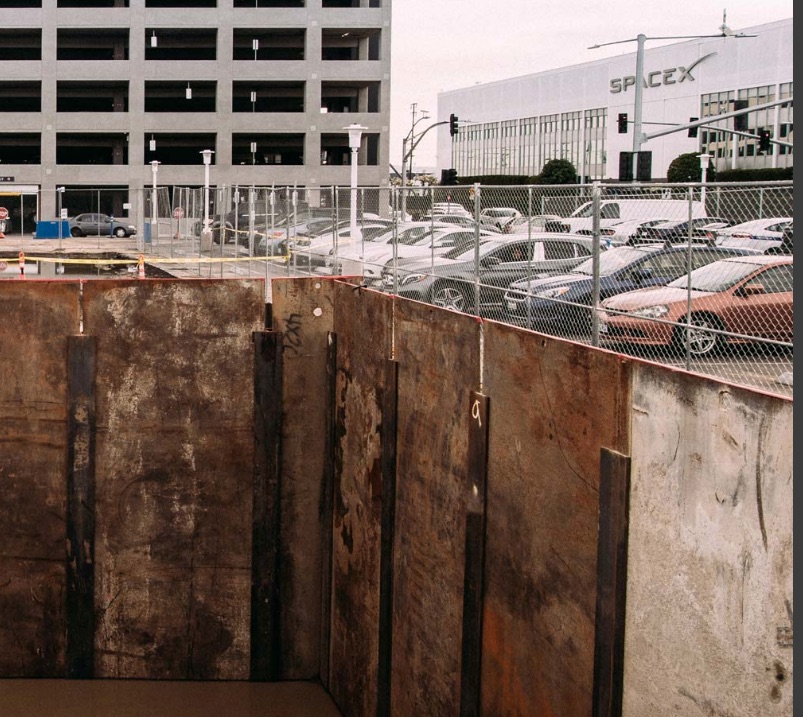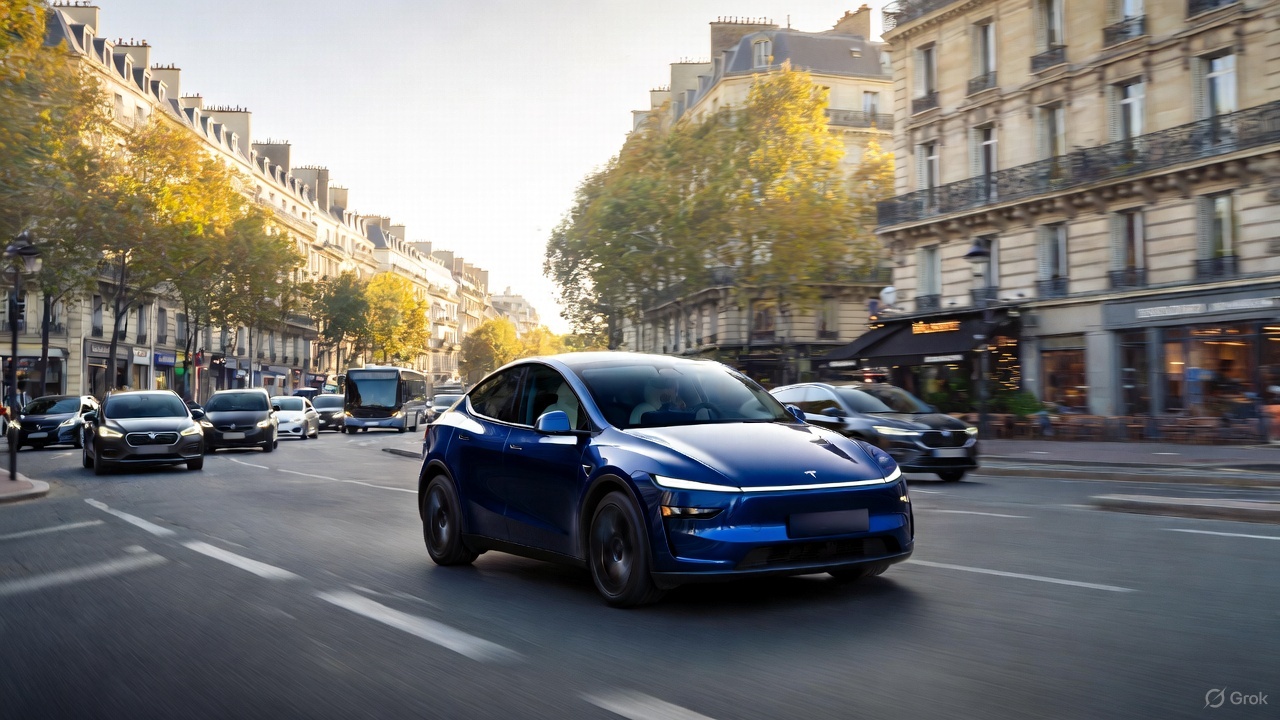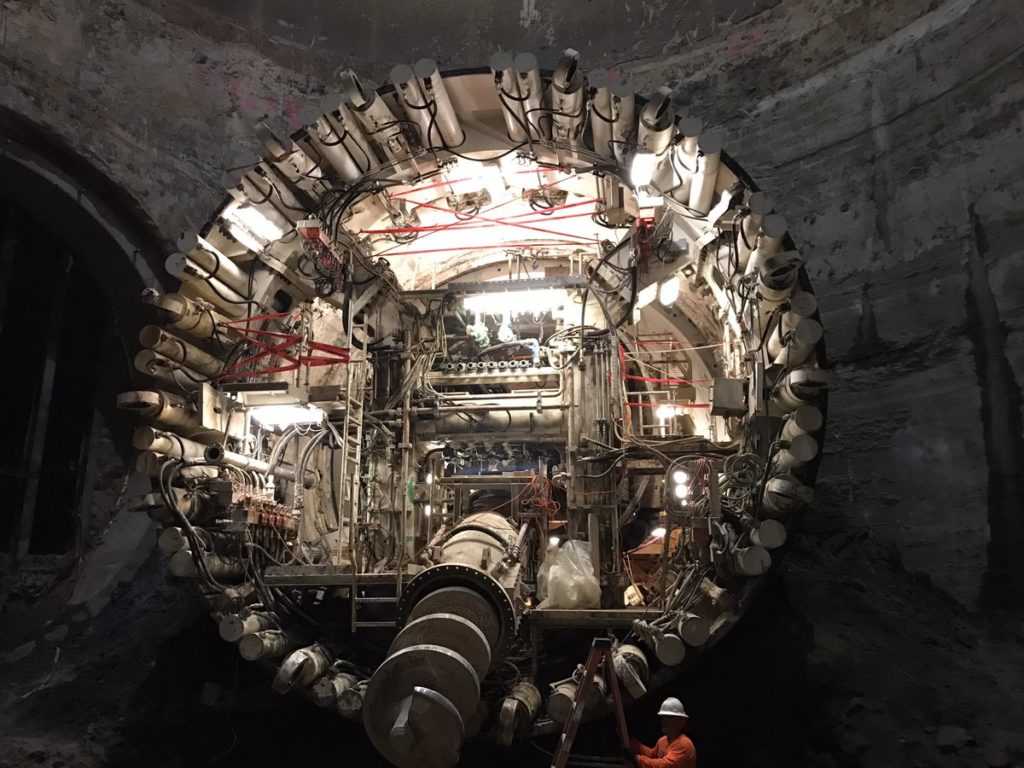News
Elon Musk’s new boring company aims to build 30 levels of tunnels for cars and Hyperloop

Elon Musk confirmed that he really is starting to a new tunneling company and as with many of his other side projects, it’s starting right there at SpaceX. He shed new light on the project yesterday in an interview with Bloomberg, announcing that the venture will be an independent venture aimed at building vast underground transportation networks for cars and high speed trains such as the Hyperloop.
What’s in a Name?
Musk’s sense of humor is evident in the list of potential names for the company, Elon even going so far as to consider trolling Toys “R” Us in suing: “My other idea was to call it Tunnels R Us and to essentially troll Toys “R” Us into filing a lawsuit,” the slightly deranged CEO cackled. In my mind, he’s channeling Mr. Burns from the Simpsons. “Now we’ve decided to troll AT&T instead! We’re going to call it American Tubes and Tunnels.”
Ultimately, he settled on The Boring Company which in and of itself is loaded with wordplay. Even the acronym is funny, rocking a big TBC, or To Be Continued, which is comical on more than a few levels with Musk always dreaming up, starting and delivering on yet another completely disruptive idea in a disparate industry.
To kick off this rather mundane company, Elon and SpaceX have a leader in charge but no full time staff though it has secured a domain over at BoringCompany.com.
New Details on The Dig
Elon shed some light on the team’s intentions with the original dig, stating that the only reason it started there is because they already own the land and wouldn’t need any additional permits to get started. In parallel to the on-site construction, a team is working to secure the necessary permits to extend the initial tear in the earth beyond the property lines of SpaceX.
The initial hole will evolve into a sort of ramp that will ultimately serve as the point of entry for a full sized boring machine to get down around 50 feet down which is necessary to avoid gas, sewer and other infrastructure that sits closer to the surface.
But where is it going? Musk and team have not shared any details on the actual destination of the tunnel. With Musk’s ideas and pension for getting things started, there’s likely a team of undergrad interns locked away in the basement of SpaceX mapping out the nuts and bolts of the tunneling solution including where this initial stretch will actually go.
To Infinity and Beyond
To get the project started and to really dig into the possibilities of tunnels, a used boring machine, dubbed Nessie, was purchased for pennies on the dollar, not so much to dig the hole, but to get the team grounded in the technology.
From there, Elon has full confidence that the speed of boring can be improved 5-10x which is based more on a first principles analysis of the technology than actual experience tunneling not that a lack of industry experience has ever stopped Elon in the past, having already transformed the online banking industry with Paypal, the entire automotive industry with Tesla and rocketry with SpaceX.
Disruption
Ever the mad scientist, Elon seems to thrive on change, seeing the possibility through the stagnation, or maybe because of it.
Looking more broadly at urban transportation, even Tesla + Hyperloop will have a tough time solving the problem if we are bound to the surface. Peeling back the crust reveals almost endless volumes of space to play with and Elon hopes to do just that, even talking of certain areas having 30 layers of tunnels which to the unimaginative minds of the masses is incomprehensible.
Whether or not Musk’s latest machination will make it off the property of SpaceX is yet to be seen but one thing is for certain – the fuse that is Elon Musk has been lit and he is going to make an honest effort at leveling up the way we get around town by taking us all underground.
Source: Bloomberg

News
Man credits Grok AI with saving his life after ER missed near-ruptured appendix
The AI flagged some of the man’s symptoms and urged him to return to the ER immediately and demand a CT scan.

A 49-year-old man has stated that xAI’s Grok ended up saving his life when the large language model identified a near-ruptured appendix that his first ER visit dismissed as acid reflux.
After being sent home from the ER, the man asked Grok to analyze his symptoms. The AI flagged some of the man’s symptoms and urged him to return immediately and demand a CT scan. The scan confirmed that something far worse than acid reflux was indeed going on.
Grok spotted what a doctor missed
In a post on Reddit, u/Tykjen noted that for 24 hours straight, he had a constant “razor-blade-level” abdominal pain that forced him into a fetal position. He had no fever or visible signs. He went to the ER, where a doctor pressed his soft belly, prescribed acid blockers, and sent him home.
The acid blockers didn’t work, and the man’s pain remained intense. He then decided to open a year-long chat he had with Grok and listed every detail that he was experiencing. The AI responded quickly. “Grok immediately flagged perforated ulcer or atypical appendicitis, told me the exact red-flag pattern I was describing, and basically said “go back right now and ask for a CT,” the man wrote in his post.
He copied Grok’s reasoning, returned to the ER, and insisted on the scan. The CT scan ultimately showed an inflamed appendix on the verge of rupture. Six hours later, the appendix was out. The man said the pain has completely vanished, and he woke up laughing under anesthesia. He was discharged the next day.
How a late-night conversation with Grok got me to demand the CT scan that saved my life from a ruptured appendix (December 2025)
byu/Tykjen ingrok
AI doctors could very well be welcomed
In the replies to his Reddit post, u/Tykjen further explained that he specifically avoided telling doctors that Grok, an AI, suggested he get a CT scan. “I did not tell them on the second visit that Grok recommended the CT scan. I had to lie. I told them my sister who’s a nurse told me to ask for the scan,” the man wrote.
One commenter noted that the use of AI in medicine will likely be welcomed, stating that “If AI could take doctors’ jobs one day, I will be happy. Doctors just don’t care anymore. It’s all a paycheck.” The Redditor replied with, “Sadly yes. That is what it felt like after the first visit. And the following night could have been my last.”
Elon Musk has been very optimistic about the potential of robots like Tesla Optimus in the medical field. Provided that they are able to achieve human-level articulation in their hands, and Tesla is able to bring down their cost through mass manufacturing, the era of AI-powered medical care could very well be closer than expected.
News
Tesla expands Model 3 lineup in Europe with most affordable variant yet
The Model 3 Standard still delivers more than 300 miles of range, potentially making it an attractive option for budget-conscious buyers.

Tesla has introduced a lower-priced Model 3 variant in Europe, expanding the lineup just two months after the vehicle’s U.S. debut. The Model 3 Standard still delivers more than 300 miles (480 km) of range, potentially making it an attractive option for budget-conscious buyers.
Tesla’s pricing strategy
The Model 3 Standard arrives as Tesla contends with declining registrations in several countries across Europe, where sales have not fully offset shifting consumer preferences. Many buyers have turned to options such as Volkswagen’s ID.3 and BYD’s Atto 3, both of which have benefited from aggressive pricing.
By removing select premium finishes and features, Tesla positioned the new Model 3 Standard as an “ultra-low cost of ownership” option of its all-electric sedan. Pricing comes in at €37,970 in Germany, NOK 330,056 in Norway, and SEK 449,990 in Sweden, depending on market. This places the Model 3 Standard well below the “premium” Model 3 trim, which starts at €45,970 in Germany.
Deliveries for the Standard model are expected to begin in the first quarter of 2026, giving Tesla an entry-level foothold in a segment that’s increasingly defined by sub-€40,000 offerings.
Tesla’s affordable vehicle push
The low-cost Model 3 follows October’s launch of a similarly positioned Model Y variant, signaling a broader shift in Tesla’s product strategy. While CEO Elon Musk has moved the company toward AI-driven initiatives such as robotaxis and humanoid robots, lower-priced vehicles remain necessary to support the company’s revenue in the near term.
Reports have indicated that Tesla previously abandoned plans for an all-new $25,000 EV, with the company opting to create cheaper versions of existing platforms instead. Analysts have flagged possible cannibalization of higher-margin models, but the move aims to counter an influx of aggressively priced entrants from China and Europe, many of which sell below $30,000. With the new Model 3 Standard, Tesla is reinforcing its volume strategy in Europe’s increasingly competitive EV landscape.
News
Tesla FSD (Supervised) stuns Germany’s biggest car magazine
FSD Supervised recognized construction zones, braked early for pedestrians, and yielded politely on narrow streets.

Tesla’s upcoming FSD Supervised system, set for a European debut pending regulatory approval, is showing notably refined behavior in real-world testing, including construction zones, pedestrian detection, and lane changes, as per a recent demonstration ride in Berlin.
While the system still required driver oversight, its smooth braking, steering, and decision-making illustrated how far Tesla’s driver-assistance technology has advanced ahead of a potential 2026 rollout.
FSD’s maturity in dense city driving
During the Berlin test ride with Auto Bild, Germany’s largest automotive publication, a Tesla Model 3 running FSD handled complex traffic with minimal intervention, autonomously managing braking, acceleration, steering, and overtaking up to 140 km/h. It recognized construction zones, braked early for pedestrians, and yielded politely on narrow streets.
Only one manual override was required when the system misread a converted one-way route, an example, Tesla stated, of the continuous learning baked into its vision-based architecture.
Robin Hornig of Auto Bild summed up his experience with FSD Supervised with a glowing review of the system. As per the reporter, FSD Supervised already exceeds humans with its all-around vision. “Tesla FSD Supervised sees more than I do. It doesn’t get distracted and never gets tired. I like to think I’m a good driver, but I can’t match this system’s all-around vision. It’s at its best when both work together: my experience and the Tesla’s constant attention,” the journalist wrote.
Tesla FSD in Europe
FSD Supervised is still a driver-assistance system rather than autonomous driving. Still, Auto Bild noted that Tesla’s 360-degree camera suite, constant monitoring, and high computing power mark a sizable leap from earlier iterations. Already active in the U.S., China, and several other regions, the system is currently navigating Europe’s approval pipeline. Tesla has applied for an exemption in the Netherlands, aiming to launch the feature through a free software update as early as February 2026.
What Tesla demonstrated in Berlin mirrors capabilities already common in China and the U.S., where rival automakers have rolled out hands-free or city-navigation systems. Europe, however, remains behind due to a stricter certification environment, though Tesla is currently hard at work pushing for FSD Supervised’s approval in several countries in the region.









